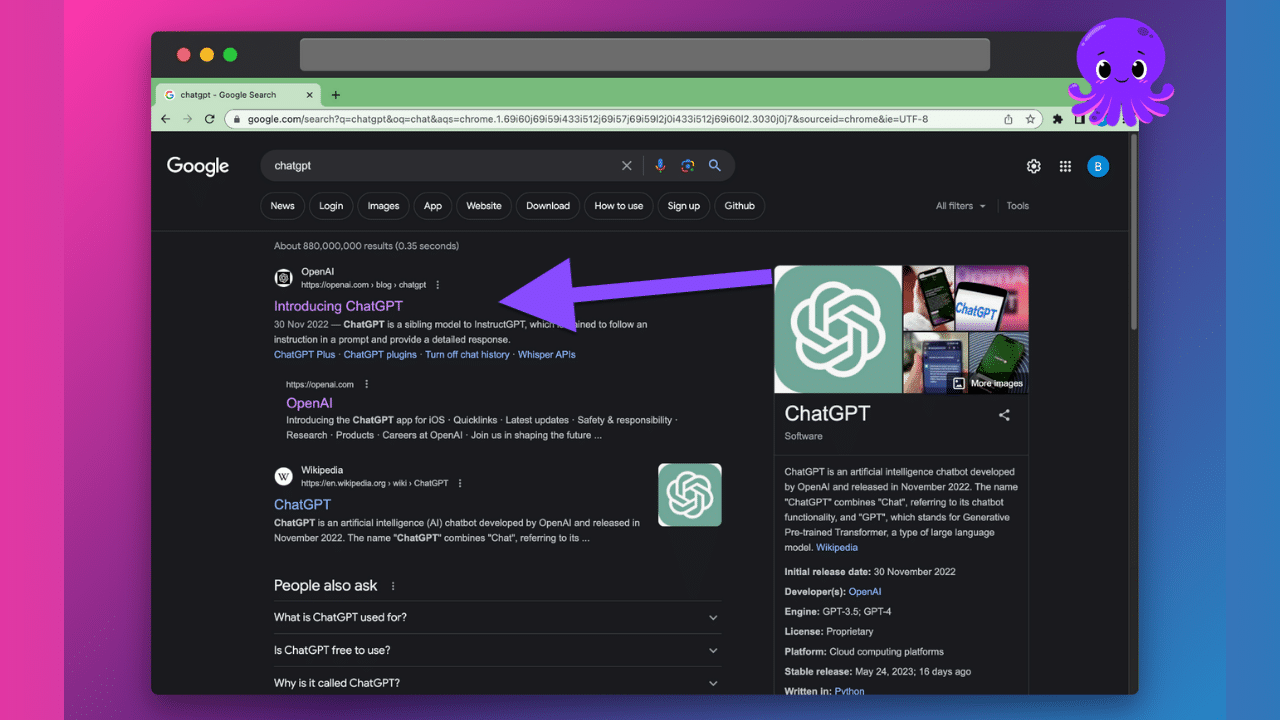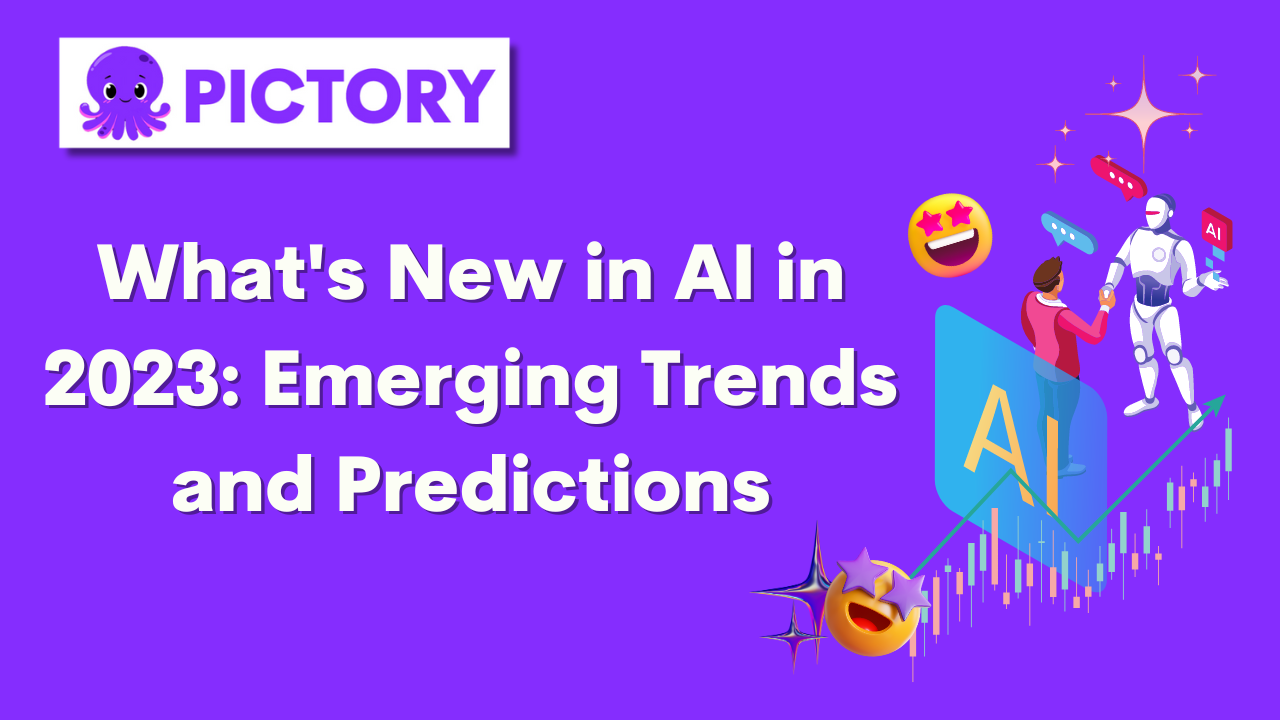Welcome to the thrilling world of “What’s new in AI in 2023?” Artificial intelligence has been making waves across industries, and this year promises to be no different.
From generative AI models transforming the way we create content to the democratization of AI technology through no-code/low-code platforms, the future of AI is brighter than ever.
Are you ready to dive into the exciting advancements and emerging trends that will shape the AI landscape in 2023?
Buckle up, and let’s explore the innovations that are revolutionizing the way we live, work, and interact with technology!
Short Summary
-
2023 is a vibrant year for AI, with advancements in NLP, generative models & autonomous robots!
-
No-code/low-code platforms are making AI more accessible and ethical with explainable AI.
-
An exciting collaboration between humans and AI will drive innovation & unlock the full potential of this technology!
AI Advancements in 2023: Top Predictions
The year 2023 is poised to be a groundbreaking year for artificial intelligence, with an array of AI trends set to shake up the landscape.
From natural language processing breaking barriers in communication to generative AI models creating stunning works of art, the possibilities are endless.
With governments and businesses worldwide investing an incredible $500 billion in AI technology, the rapid pace of AI advancements is truly astounding.
It’s an exciting time to be in the AI space, as industry leaders continue to push the boundaries of what’s possible with machine learning and computer vision.
Moreover, the AI landscape in 2023 will not just be about automating tasks; it will be about revolutionizing industries and transforming the way we approach business processes.
With AI-generated art, autonomous robots, and AI-powered apps becoming increasingly popular, the future of AI is shaping up to be more innovative and accessible than ever before.
As business leaders and data scientists come together to harness the power of AI, the potential for growth and success is limitless.
Generative AI Models



As the capabilities of AI continue to expand, generative AI models are diversifying from automating tasks to creating new artifacts like text, images, and even synthetic data for businesses.
This exciting shift in AI models is opening up new opportunities for industries to innovate, optimize, and grow.
From autonomous driving to e-commerce and entertainment, generative AI models are playing a pivotal role in shaping the future of various sectors.
However, implementing generative AI models comes with its own set of challenges, such as identifying the right data, budget requirements, data privacy, and hiring the right people.
Despite these hurdles, the advancements in generative AI models are nothing short of breathtaking.
GPT-3 and DALL-E, developed by OpenAI, can create text and images that are almost indistinguishable from human-generated content.
As these cutting-edge technologies continue to improve and become more widely adopted, the impact of generative AI models on businesses and industries will be monumental.
AI-Generated Art

The world of art is no stranger to the incredible power of AI.
AI-generated art is becoming increasingly popular, allowing artists to explore new creative frontiers and push the boundaries of conventional art forms.
AI tools and techniques, such as machine learning, deep learning, and neural networks, enable artists to create works in a fraction of the time it would take using traditional techniques.
From mesmerizing paintings to captivating music and awe-inspiring sculptures, AI-generated art is breathing new life into the artistic world.
The emergence of open-source AI art generators has sparked a surge of individual innovation, rivaling even the impressive capabilities of OpenAI’s DALL-E.
As technology continues to evolve and artists become more adept at harnessing the power of AI, the possibilities for creative expression are truly limitless.
The fusion of AI and art is transforming the way we experience and appreciate creativity, opening up a world of breathtaking masterpieces that were once unimaginable.
Natural Language Processing
Natural language processing (NLP) has come a long way in recent years, and 2023 is no exception.
NLP is an AI technology that simplifies language-based processes, making it easier for humans and computers to communicate.
With the increasing adoption of AI across industries, the need for advanced AI trends, such as multi-modal learning in AI, is more crucial than ever.
These techniques allow algorithms to process, interpret, and support multimodal data, making AI even more efficient and versatile.
In the finance sector, for example, natural language processing is being utilized to enhance customer experience by offering tailored services such as personalized offers and chatbot services.
As AI continues to advance and become more integrated into our daily lives, natural language processing will play a significant role in shaping the future of AI technology and revolutionizing the way we interact with machines.
Democratization of AI Technology
The democratization of AI technology is a game-changer in the world of artificial intelligence. No-code/low-code platforms and AI-powered apps are empowering employees to become “armchair” data scientists and engineers, making AI more accessible to users.
These platforms bridge the skills gap and enable users to create AI-driven applications without needing to understand the underlying code.
The power of democratized AI lies in the potential to speed up the AI development process.
It enables subject matter experts to contribute their knowledge and improve accuracy within AI projects.
As more organizations adopt these platforms and apps, the potential for innovation and growth is immense.
With open-source AI startups gaining momentum and the AI “bill of rights” providing guidelines on how to protect personal data and limit surveillance, the democratization of AI technology is set to revolutionize the way we use and benefit from AI.
No-Code/Low-Code Platforms
No-code/low-code platforms are instrumental in making AI more accessible and addressing the “black box” problem that plagues many AI systems.
By simplifying the process of building AI models and making them more understandable to users, these platforms help ensure AI ethics and fairness.
With explainable AI becoming a top priority in 2023, no-code/low-code platforms play a crucial role in maintaining transparency and trust in AI systems.
One exciting example of the potential of no-code/low-code platforms is IBM’s Project Debater, the first AI system capable of debating complex subjects.
By developing more ethical and explainable AI models, organizations can work to eliminate bias and unfairness from their automated decision-making systems, ultimately leading to more accurate and trustworthy AI systems.
AI-Powered Apps
AI-powered apps are becoming increasingly popular, offering users a range of innovative and practical functionalities.
From chatbots and image recognition tools to personalized ads, AI allows these apps to learn from experience, adjust to new inputs, and perform human-like tasks.
As more people are affected by AI decisions, the focus on bias removal in machine learning is becoming increasingly important, with objective predictions and mitigation tools playing a vital role in ensuring fairness in production AI.
To overcome the challenges associated with biased algorithms, organizations can implement techniques such as data augmentation, model calibration, and fairness metrics.
These tools help to ensure that AI models are making accurate predictions and that any potential bias is minimized.
As AI-powered apps continue to grow in popularity and permeate various aspects of our lives, the importance of ensuring fairness and accuracy in AI systems cannot be overstated.
AI Ethics and Fairness
In 2023, AI ethics and fairness are of paramount importance, as organizations strive to create AI systems that are both effective and equitable.
Explainable AI is a critical component of addressing AI bias and fairness concerns, as it makes the rationale behind the output of an algorithm understandable to humans.
By developing AI models that adhere to ethical principles and guidelines, organizations can avoid the pitfalls of AI bias and ensure that their AI systems make fair and unbiased decisions.
The National Institute of Standards has outlined four principles of explainable AI: providing evidence or reasons for all outputs, ensuring explanations are understandable to individual users, accurately reflecting the process used to arrive at the output, and operating only under the conditions the system was designed for or when it reaches sufficient confidence in its output.
By adhering to these principles, organizations can build AI systems that are not only powerful but also ethical, responsible, and fair.
Bias Removal
Bias removal in machine learning is becoming increasingly important as more people are affected by AI decisions.
Ensuring AI models make objective predictions is crucial to avoid discrimination when applying for loans, buying products online, or receiving medical treatment.
To achieve this, organizations can implement objective predictions and mitigation tools for production AI, such as data augmentation, model calibration, and fairness metrics.
By investing in these techniques, businesses can ensure that their AI models are making accurate predictions and that any potential bias is minimized.
The importance of bias removal in machine learning cannot be overstated, as it helps to build trust in AI systems and ensure that AI decisions are fair for everyone.
Explainable AI
Explainable AI (XAI) is a growing field of AI, driven by concerns regarding AI bias and fairness.
XAI aims to make the rationale behind the output of an algorithm understandable to humans, ensuring that AI systems are accountable and transparent in their decision-making processes.
This is particularly important in industries such as healthcare, where transparency is crucial for better decision-making, improved patient care, and increased efficiency.
The benefits of explainable AI are manifold, including the reduction of AI bias, increased trust in AI systems, faster identification of areas for improvement in AI models, and providing insights into how AI models make decisions.
As AI continues to advance and become more integrated into our daily lives, explainable AI will play a critical role in ensuring the ethical and responsible use of this powerful technology.
Transparency
Transparency is key to gaining trust in AI systems, as it allows users to understand how AI models make decisions and the data used to arrive at those decisions.
In the healthcare industry, transparency is particularly important, as it facilitates better decision-making, improves patient care, and boosts efficiency.
However, achieving transparency in healthcare is not without its challenges, such as the complexity of AI systems, the need for data privacy, and the difficulty of understanding how AI systems make decisions.
To overcome these challenges, organizations can adopt innovative explainable AI techniques, develop comprehensive ethical frameworks, and implement cutting-edge transparency tools.
By embracing transparency in AI systems, organizations can build trust with their users and ensure that their AI models are accurate, fair, and effective.
Business Applications of AI in 2023
In 2023, AI will continue to revolutionize various industries, with key business applications such as healthcare, cybersecurity, edge computing, and harnessing AI for business success.
With an ever-growing market, predicted to reach $22.4 billion in 2023, AI in cybersecurity will play an increasingly important role in detecting and responding to threats, protecting sensitive data, and improving incident response.
Healthcare is another industry where AI is making significant strides, improving patient care, reducing costs, and increasing efficiency.
Edge computing is transforming the way data is processed and stored, reducing latency and improving accuracy.
By harnessing AI for business success and aligning AI with business goals, organizations can reap the benefits of AI-driven innovation, increased efficiency, and better decision-making.
Healthcare
Leveraging AI in healthcare is revolutionizing patient care, reducing costs, and increasing efficiency.
AI applications in healthcare include diagnostics, analysis of patient data, drug discovery, medical robotics, and telehealth.
AI algorithms can be trained to utilize a variety of methods, such as machine vision and optical character recognition.
This can optimize the presentation of medical results, thus improving diagnosis significantly.
As AI continues to advance and become more integrated into the healthcare industry, its potential to transform patient care and improve outcomes is immense.
By harnessing the power of AI and adopting cutting-edge technologies, healthcare providers can offer better, more personalized care to their patients, ultimately improving the quality of life for countless individuals.
Cybersecurity
AI is playing a significant role in cybersecurity in 2023, automating security systems, monitoring user behavior, and identifying anomalous activity to protect sensitive data.
With a market size predicted to reach $22.4 billion in 2023 and an astounding $60.6 billion by 2028, the importance of AI in cybersecurity cannot be overstated.
AI can be used for threat detection and analysis, authentication, and behavioral analytics, helping to identify vulnerabilities and improve incident response.
As organizations become more reliant on digital technology, the need for robust cybersecurity measures is more critical than ever.
By incorporating AI and machine learning into their cybersecurity strategies, businesses can stay ahead of the curve and safeguard their valuable data and systems.
Edge Computing
Edge computing is an exciting distributed computing paradigm that brings computation and data storage closer to the edge of the network, where data is generated.
This allows for lightning-fast processing of data and reduces latency, resulting in improved accuracy and efficiency.
In 2023, edge AI will be used in various industries for digital transformation, driving smart and intelligent applications, increasing efficiency, reducing costs, and growing customer satisfaction.
As the demand for real-time data processing continues to grow, edge computing will play a crucial role in meeting this need.
By harnessing the power of edge computing and AI, organizations can revolutionize their operations, streamline processes, and make more informed decisions, ultimately driving business success in an increasingly competitive landscape.
Harnessing AI for Business Success
Harnessing AI for business success requires a well-defined strategy that aligns with employee interests and business goals.
By leveraging AI and machine learning technologies, businesses can automate and streamline operations, predict future trends and customer behavior, and make better decisions.
To ensure the successful implementation of AI and ML models, organizations need to onboard the right people, identify and address challenges, and keep operations in alignment with ethics and responsibilities.
Investing in data quality is essential to avoid flawed or biased AI systems, as it ensures that the data used to train AI and ML models is accurate and reliable.
By developing a comprehensive AI strategy, businesses can harness the power of AI to drive innovation, improve productivity, and achieve greater success in today’s fast-paced, technology-driven world.
Aligning AI with Business Goals
To effectively align AI with business goals, organizations must invest in data quality, understand the real business purpose of AI, and prioritize initiatives based on business importance and data science feasibility.
By focusing on these key factors, businesses can ensure that their AI systems provide accurate, relevant, and actionable insights that drive decision-making and contribute to overall business success.
Collaboration between humans and AI will become the norm in 2023, with AI assisting in automated processes while humans perform specialized tasks.
Teams that harness the power of AI and human collaboration can significantly improve productivity and efficiency, resulting in better decision-making and increased success.
By embracing this collaborative approach, organizations can unlock the full potential of AI and drive innovation across various industries.
Investing in Data Quality
Investing in data quality is essential to the success of AI and ML implementations, as it ensures that the data used to train AI models is accurate and reliable.
Inaccurate or biased data can lead to flawed AI systems, resulting in poor decision-making and potential harm to individuals and organizations.
By prioritizing data quality, businesses can avoid these pitfalls and create AI systems that deliver accurate, reliable, and unbiased results.
In addition to investing in data quality, organizations must also focus on creating diverse teams, as this ensures that different perspectives are taken into account when making decisions.
By fostering a culture of diversity and inclusion, businesses can develop AI systems that are not only accurate and effective but also fair and unbiased, ultimately leading to better outcomes for all.
Collaboration between Humans and AI
Collaboration between humans and AI is set to become a norm in 2023, as AI systems increasingly automate repetitive tasks and provide data-driven insights, while humans focus on performing specialized and creative tasks such as design and user experience.
We can combine the strengths of both humans and AI, teams can achieve better decision-making, increased efficiency, and improved productivity.
As AI continues to advance and become more integrated into our daily lives, the importance of collaboration between humans and AI cannot be overstated.
By working together, humans and AI systems can harness their respective strengths to drive innovation, solve complex problems, and create a brighter future for all.
Summary
In conclusion, the year 2023 promises to be a groundbreaking year for AI advancements, with emerging trends and innovations set to reshape industries and transform the way we live, work, and interact with technology.
From generative AI models and AI-generated art to the democratization of AI technology and the growing importance of AI ethics and fairness, the future of AI is both exciting and full of potential.
As we embrace these advancements and incorporate AI into our daily lives, it is essential to prioritize data quality, align AI with business goals, and foster collaboration between humans and AI.
By doing so, we can ensure that AI systems are accurate, efficient, and unbiased, ultimately leading to better outcomes for individuals, organizations, and society as a whole.
Frequently Asked Questions
What is the new artificial intelligence in 2023?
2023 brings with it a breakthrough in Artificial Intelligence technology!
Natural Language Processing (NLP) is set to revolutionize the way we interact with AI, allowing us to communicate more naturally with machines than ever before.
Exciting times lie ahead!
What are the concerns of AI in 2023?
As AI technology advances in 2023, it presents both exciting opportunities and deep concerns. Security remains a major concern, as threats from cyber attacks or data misuse may affect personal and business data.
The ethical implications of AI decisions will also come under scrutiny, with questions about its potential impacts on privacy, employment, and even the nature of human-machine interaction itself.
If you found this article interesting, why not read How Will AI Revolutionize Video Creation?
And then sign up for a FREE Pictory account and witness AI video creation at work!

















